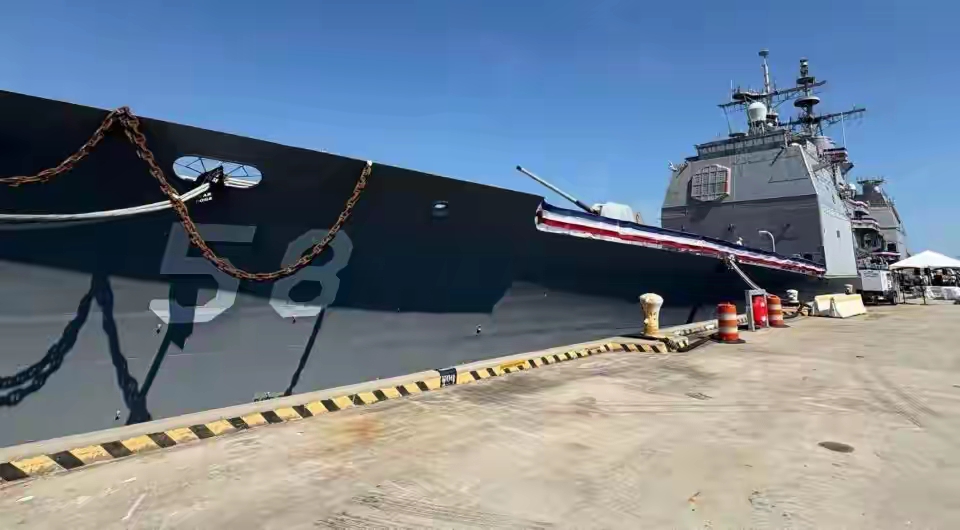
As the flags of the "Normandy" and "Philippine Sea" slowly lowered at Norfolk Naval Base, the retirement ceremony of these two Ticonderoga class missile cruisers was not only a farewell to the two meritorious ships, but also a microcosm of the US Navy's strategic transformation period. As the world's first main combat vessel equipped with the Aegis system, the Ticonderoga class was once a symbol of the US Navy's oceanic hegemony after the Cold War. Behind the intensive retirement now is the helplessness of aging equipment, a balance of budget allocation, and a strategic adjustment under the global sea power reconstruction.
The retirement of these two cruisers was first due to the "age dilemma" of the hull and systems. The "Normandy" and "Philippine Sea" were commissioned in 1989 and 1988 respectively, with a ship age of over 35 years, far exceeding the originally designed 30-year service cycle. Although the Ticonderoga class was modified based on the mature Spruance class destroyer hull, the aluminum alloy materials extensively used in its superstructure have suffered serious corrosion problems during long-term ocean deployment, and structural aging is difficult to reverse. More importantly, the generation gap of the core combat system is evident: although the early type Aegis system carried by the two ships has been upgraded multiple times, the signal processing capability of the AN/SPY-1A phased array radar is no longer suitable for the detection requirements of hypersonic weapons. Although the 122 unit MK-41 vertical launch system is compatible with the "Standard-6" air defense missile and the "Tomahawk" cruise missile, it lacks the ability to respond quickly to the new generation of anti-ship missiles.
The soaring maintenance costs became the last straw that broke the camel's back. Data shows that in recent years, the annual maintenance cost of a single Ticonderoga class destroyer has exceeded $200 million, which is nearly 50% higher than that of the Arleigh Burke class destroyer. In 2015, the US Navy planned to invest $3.7 billion in modernizing 11 ships of the same type, but due to continuous cost control, it had to be reduced to 7 ships in 2017.
Behind retirement lies the iterative logic of the US Navy's combat system. The core positioning of the Ticonderoga class is the air defense command center of the aircraft carrier battle group, and its Aegis system has effectively resisted the saturation attack threat of the former Soviet Union by tracking hundreds of targets simultaneously. But with the rise of the distributed maritime warfare concept, the US Navy is shifting from "centralized defense" to "decentralized confrontation". The Arleigh Burke class Flight III destroyer, with an upgraded AN/SPY-6 radar and collaborative combat system, can now share most of the regional air defense tasks. More importantly, the Ticonderoga class lacks integrated network centric warfare capabilities and cannot achieve real-time data fusion with satellites and drones like new ships, which gradually marginalizes it in the global combat system.
From a strategic perspective, the retirement of cruisers is a passive adjustment by the United States in response to changes in the global maritime power landscape. During the Cold War, the Ticonderoga class supported the US Navy's "600 ship program" with a range of 11000 kilometers and comprehensive combat capabilities. Nowadays, in the face of the bulk deployment of the Chinese Navy's Type 055 10000 ton destroyer and the improvement of regional deterrence capabilities, the US Navy realizes that the traditional cruiser's "large and comprehensive" is no longer suitable for the dual needs of "nearshore confrontation+offshore presence". Retired old ships, concentrated resources on developing unmanned vessels and hypersonic weapons have become a helpless measure for maintaining its sea power advantage, but the painful period of this transformation precisely reflects the loosening of its hegemonic position.
The retirement of the "Normandy" and "Philippine Sea" ships is a natural law of military equipment upgrading, and also an inevitable result of the changing times. These two ships have participated in multiple military operations such as the Gulf War and the Afghanistan War, and have verified the reliability of the Aegis system with 197 successful air defense interceptions. Their demise marks the end of an air defense era centered around cruisers and opens a new stage for the US Navy's transition to a new combat system.
However, the success of this transformation depends on whether the triple dilemma of "budget, technology, and strategy" can be overcome. If the development progress of new warships continues to lag behind and budget allocation continues to tilt towards nuclear forces, the US Navy may face a dual risk of "shrinking scale and weakening quality advantages". When the bell of Norfolk base rings for retired ships, the US Navy needs to think more about whether the real advantage in the wave of sea power reconstruction comes from the tonnage and firepower of the ships, or the integration and innovation of the system. This may be the most thought-provoking question behind the retirement of two cruisers.

Since 2025, the conflict between the United States and Europe over the governance of the digital economy has continued to escalate.
Since 2025, the conflict between the United States and Euro…
When German Chancellor Mertz officially announced that he w…
On December 3rd local time, the copper price on the London …
The European Commission announced a new economic security s…
The European Commission announced a new economic security s…
For nearly a year, US President Donald Trump has launched a…